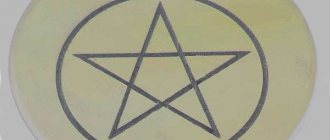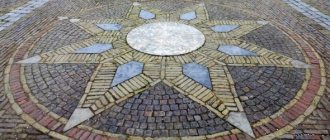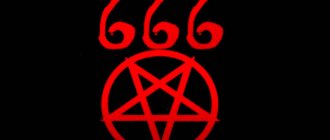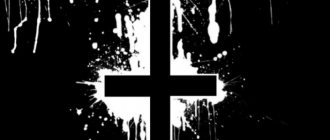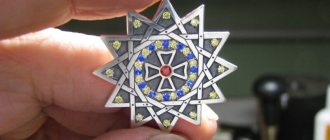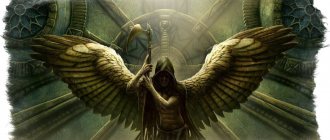A star as a geometric symbol is a sign of the divine idea and will, according to which our world appeared and began to rotate in space. Since ancient times, this figure has symbolized the celestial stars, which were revered as intelligent beings that constantly influence our world, which is why they have become synonymous with wisdom. It is believed that the figure of the star exactly followed the trajectory of Venus. That is why it became the Sumerian and Egyptian star sign.
Royal Order of the Two Sicilies
The ancients believed that each person has his own star, which appears at his birth and goes out at the moment of death. Today, echoes of these beliefs are reflected in such seemingly mundane phrases as “my star has not yet risen” or “his star has faded.”
All ancient civilizations knew the image of a five-rayed star, also called the Star of Magi or the pentagram. In Ancient Mesopotamia, the five-pointed star was a symbol of royal power, as well as an amulet that could protect against all diseases. By drawing it above the front door, it was possible to block evil forces from entering the home.
Major Arcana “Star” from the Tarot deck of the Duke of Visconti, 15th century.
The philosopher penetrates through the celestial sphere with the Sun, Moon and six-pointed stars into the higher spheres. The so-called “Flammarion engraving”, 19th century.
In Judaism, the pentagram is a symbol of the Pentateuch of Moses. The ancient Greeks identified it with the letter alpha. The Pythagoreans considered the five-pointed star a symbol of bodily and spiritual harmony, a sign of health, five senses and five years of silence for the student before initiation into the secrets of the teaching.
For Freemasons, the pentagram is a solar sign, which is called the “flaming star.” Sometimes the letter G is placed in the center, which is interpreted as gnosis, or knowledge.
Star - emblem of the Scottish clan Retrey
Three six-pointed stars on the shield and Venus. Engraving of the Master of the House Book from a German treatise of the 15th century.
The multicolored star is the emblem of the Druze, an Ismaili sect in the Middle East.
The six-pointed ordinary star was the personification of the Babylonian goddess Ishtar. The hexagram, also a six-pointed star, but composed of two triangles - the star of David, or Solomon - was a powerful protective talisman. The Arabs believed that this symbol had power over the genies. In the Arabian collection of fairy tales "A Thousand and One Nights", this powerful spirit was obliged to fulfill the three wishes of the person who broke this seal and freed him.
The hexagram is the basis of action and immobility, personifying the unity of opposites. In alchemy, it is called the seal of Solomon and includes seven parts or seven metals, in the center of which is gold, as well as the four elements: earth, air, fire and water. This emblem is the coat of arms of Israel and is called the Shield of David, and is also considered an attribute of many mother and sea goddesses, such as Isis.
Kabbalistic amulet with a pentagram inscribed in it. Engraving from a treatise of the 17th century.
Coat of arms of the Belarusian village of Krevo. The hexagonal star, symbol first of Ishtar and then of Venus, shines above the crescent moon, originally the symbol of Hecate and the city of Constantinople
Three small stars on a shoulder strap with one gap are the insignia of a senior lieutenant of the Soviet Army since 1943. Also visible in the photo is the Soviet Order of the Red Star
The star was embroidered on sails by sailors, who thus expressed their veneration of Aphrodite, born from sea foam. This geometric figure was often used for fortune telling, and a number of signs were also associated with it. The inhabitants of Sparta believed that if a star fell, then this was a sign that the king had committed some kind of sin, for which he must repent and justify himself.
In ancient Rome they believed that it was Jupiter who was letting people know about an impending storm or that a child was born. In Catholic tradition, a falling star was interpreted as a sign that someone's soul had left purgatory. Muslims believe that these are stones thrown by angels to scare away evil genies from heaven. Since many pagan peoples had a cult of stars, Christianity tried in every possible way to fight it, warning against idolatry. For example, the fall of Israel and its capture by the Assyrians is interpreted in the Bible by the idolatry of the Jews, who began to worship the stars. However, Christianity was still forced, albeit purely symbolically, to accept the cult of the stars: for example, the Virgin Mary in the image of the Immaculate Conception, surrounded by a crown of stars, became very similar to the muse of astronomy Urania. Following the star, the Magi found their way through the desert to worship and bring gifts to the newborn Jesus Christ.
Star in space
Patch of a member of the American space mission Gemini 6.
Patch of a member of the expedition to the Soviet orbital station "Salyut"
Star in alchemy
Pan is the son of Mercury. On his head are the Sun and the Moon. The eight-pointed star in the sky is an alchemical symbol of salt. Miniature from an alchemical treatise of the 17th century.
Pentagram with crown. Engraving from an alchemical treatise of the 16th century.
An eight-pointed star as a symbol of salt, inscribed in the Ouroboros under the crown. Engraving from an alchemical treatise of the 16th century.
Pentagram of Baphomet
In Satanism, an inverted pentagram with two rays pointing upward fits into a double circle with the head of Baphomet in the middle. This symbol is in many ways similar to a similar emblem among the Pythagoreans, but the Greek letters are replaced by Hebrew letters, forming the name Leviathan.
Adam inscribed in the pentagram
Baphomet inscribed in the pentagram
Baphomet. Drawing from the beginning of the 20th century.
What does a star mean in Orthodoxy?
For the Jews, the star means the Pentateuch given by the Lord to Moses. These are books in which the basic laws are concentrated and the very rhythm of Jewish life is determined: Genesis, Exodus, Leviticus, Numbers, Deuteronomy. They contain the essence of the Old Testament faith.
The pentagram is used in the interior of the Cathedral of the Nativity in Bethlehem
But the pentagram embodies all the main tenets of Christianity, and is also their visible designation:
- the star has five rays, the main ray is directed upward, the five rays of the pentagram indicate the full implementation of the basic tenets of Christianity;
- two rays mean that Jesus Christ is God and man at the same time unmerged, inseparable, unmerged;
- three rays are a designation of the Holy Trinity, one of the main doctrines of the Christian Church, on which all doctrine rests.
Interesting fact!
The pentagram has been known to mankind for more than 3000 years. This symbol is found in different cultures and religions. And the use of the star as a Christian symbol is due, among other things, to the fact that it is similar to the cross on which the Lord Jesus Christ was crucified. The five-pointed star is also associated with the Nativity of Christ. After all, it was she who was seen by the Magi and she brought them to the infant Christ. Therefore, the five-pointed star in Orthodoxy also has the meaning of the Star of Bethlehem.
Read about the stars:
- What does a six-pointed star mean?
- Eight pointed star
The pentagram is associated with the Transfiguration of the Lord. The gospel event when Jesus Christ on Mount Tabor was transformed in front of his disciples, so that a dazzling radiance of Divine light emanated from him.
Icon of the Transfiguration of the Lord with the image of a pentogram
In iconography, this moment is reflected in the icon of the Transfiguration of the Lord, which was painted by St. Andrey Rublev. There, Christ is depicted against the background of a five-pointed star, and it is a symbol of that very Divine light and at the same time is a visible expression of the main Orthodox dogmas: about the Holy Trinity and the God-manhood of Jesus Christ.
Important! For Catholics, the five ends of the pentagram also symbolize the five wounds of Jesus Christ: two on the hands, two on the legs and one from a spear under the rib. This is a sign of the suffering of the God-man for people. In Orthodoxy, this interpretation of the star is less common, but also has its adherents.
The PENTAGRAM symbolizes a human figure with outstretched arms and legs, a holistic personality, a human microcosm. Being infinite, the five-pointed star perceives the meaning, power and perfection of the circle. Its five peaks mean spirit, air, fire, water and earth. With the letters S, A, L, V, S at the tops, it signifies health and the five senses. Like the circle, the pentagram has the ability to bind evil forces and elementals, and therefore also symbolizes good luck. In Christianity, it corresponds to the five wounds of Christ. The emblem of Sir Gawain, depicted on his shield. In black magic, the inverted pentacle symbolizes the Goat-Satan and the witch's foot. In addition, when turned upside down, it is a symbol of the perversion of the true nature of man. The pentagram (5-pointed star) is a truncated hexagram (6-pointed star), in which harmony is disturbed. In the pentagram (5), with the top up, the light elements predominate, and the bottom, the dark ones. The sum of the angles of the pentagram is 180 degrees, i.e. similar to one of the triangles that make up the hexagrass (6-pointed) - good or evil. Medieval philosophers said that the pentagram (5-pointed), unlike the hexagram (6-pointed), cannot be decomposed into two figures, therefore it is single, which symbolizes the stability of a unipolar world. The pentagram with its apex up is the emblem of the triumph of goodness and truth. According to the Western esoteric tradition, at the beginning of his training, the magician had to comprehend the secret of the pentagram and master its ritual. Those who regard this ritual as a simple way to summon or exorcise a spirit are not worthy of possessing it. The first known images of the pentagram come from Sumer and ancient Egypt, countries where magic is said to have originated. Images of pentagrams are found on Egyptian statues. The Egyptians called it “the star of dog-headed Anubis.” A double interpretation of the pentagram was already encountered in ancient times: 1) as a good, protective sign of protection from all evil, and 2) for initiates - a powerful sign of power over the earthly world. For example, in Babylon, the pentagram is usually found on royal seals, personifying the power of the ruler, which extended to all 4 cardinal directions. Pythagoras argued that the pentagram, or as he called it, hygieia (in honor of the Greek goddess Hygieia) represents mathematical perfection, because. hides the golden ratio. If you divide the length of any colored segment of the pentacle by the length of the longest of the remaining smaller segments, you will get the golden ratio. In Kabbalism, the Hebrew letters that make up the name of God (Tetragrammaton) are placed at the ends of the pentagram. Used in initiation rites for magicians, as well as for fortune telling and spells. In India, the pentagram is a symbol of Venus. In China, it personifies the union and interaction of the five elements (Wu Xing). The pentagram (from the Greek “five” and “line, line”) is a regular pentagon, on each side of which regular triangles are built, equal in height. Among the Pythagoians it is a symbol of health and perfection, an identification mark of the community. In Christian symbolism, it symbolizes the five wounds of Jesus, or in a numerical interpretation the sum of the Trinity (Father, Son and Holy Spirit) and the dual nature of Christ (divine and human). In numerology and magic, a straight pentagram with one ray up symbolizes a person (head, arms, legs), a reverse pentagram with two rays up symbolizes the devil (the Mandes goat, similar to a head with a goat’s beard, ears and horns). Sometimes the pentagram (especially in Alchemy) is mentioned as a protective sign, because the summoned demon could not cross its lines, for example, in Goethe’s “Faust” Mephistopheles himself could not leave the room while a pentagram was drawn at the exit.
What is the history of the pentagram?
In religion and culture, this magical sign, which is also called a pentagram, has its own meanings. But despite this, all peoples believed in its protective power and considered such a talisman a talisman. Among representatives of ancient Babylon and Sumerian culture it was considered a symbol of wealth and power. A star in the form of a pentagon is found among Jews, for whom it is associated with the Pentateuch, which was given by God to Moses. In Orthodoxy, the symbol of the Star of David means health, fertility and goodness. It is associated in Christianity with feelings, fingers and runes that Christ gave to his mother Mary.
If the symbol is turned upside down, it will enable a person to interact with dark forces.
The inverted five-pointed star, which is also called the devil’s pentagram, first appeared in the 18th century with the participation of E. Levy, who, being a clergyman, was fond of the occult and magic. He created his own teaching of Satanists, in which this symbol was the main one and made it possible to subjugate angels and dark forces.
In magic, each of the rays on the side and below is a symbol of the elements, and the top represents a person.
Types and meaning of stars
Differentiation occurs by the number of rays. If you ask a child to draw a star, it will probably be a 5-pointed figure. Experts talk about it and other species:
- Three-pointed star . A rare symbol, but with a rather interesting meaning. For the first time this type was used as an emblem of an international. And it meant the unity of three political forces: socialism, anarchy and republican democracy. Today such a star adorns the Mercedes logo;
- Four-pointed star . Due to its resemblance to a cross, it is identified with Orthodoxy. In fact, it is a symbol of wayfinding that is used by a number of states. For example, in Russia, special services apply such a mark as a sign of the correctly chosen path. In Japan and some European countries, the cross-shaped star icon serves as an emblem of martial arts. In ancient times, it was used as a warning of danger;
In Mesopotamia, a 4-pointed star was a symbol of the sun god Shamash.
- Pentacle . The most popular and controversial symbol, as it is associated with various historical events. Those who are interested in the horror genre have often noticed an inverted figure enclosed in a circle in films. This symbol of Satan is called a pentagram and is widely used not only in the film industry, but also in various rituals. While in ancient times Pythagoras identified it with harmony. In the Christian religion, a star with five rays was associated with the number of wounds on the body of Jesus. In this regard, a five-pointed star in red design was engraved on armor in the army, hung on the threshold of the house as a protective amulet;
In esotericism, the pentacle means the five natural elements.
- Hexagram . The six-pointed star is one of the oldest symbols, which was used in Egyptian occultism. According to biblical texts, she shone in the sky at the time of the birth of Jesus. It is also called the Star of David, marking the union of heaven and earth in the sign. Some sources interpret the hexagram as a symbol of the confrontation between God and the devil, which are depicted by two triangles - the upper and lower, respectively. In European occultism, the 6-pointed model is called the star of Solomon and is interpreted as the triumph of the triad. In classical heraldry, the hexagram is depicted on the emblem of Israel;
According to one version, the hexagram is associated with King David due to the peculiarities of writing the letter D. Thus, it was depicted as a triangle, and the six-pointed star represents just these connected geometric figures.
- Seven-pointed star . The septagram is considered a magician or elven star. Today it is personified with the belief in fairies. In recent years it has gained popularity because it symbolizes magic. It is noteworthy that each ray has a special meaning. In general, since ancient times, seven has been considered not only a lucky number, but also a frequently occurring number in nature. For example, seven days a week, wonders of the world, notes, colors of the rainbow. In the Tarot, the Star card depicts 7 celestial bodies. In esotericism, a person has seven chakras. It is also associated with the directions of light - north, west, south and east, including inward, up and down. Due to the huge number of interpretations, the septagram has been popular at all times, starting with the ancient Sumerians. This is a universal sign, the study of which will require reading a single volume. It was often used in magic, as it symbolizes the universe, fertility and creation;
Fairy is the name of a class that unites mythical creatures.
- Octogram . If you look closely at the eight-pointed star, you can see camouflaged crosses. For this reason, today it is used in heraldry by Catholic countries - the Philippines and Peru. It is also identified with the rational mind and intellect, emphasizing its connection with the planet Mercury. In ancient times, magicians applied an eight-pointed star as a protective amulet in dangerous rituals. Esotericists believe that the rays symbolize the continuous circular movements of energy in space, thereby determining the main meaning of the octogram in infinity;
Eastern philosophy explains connected crosses as the movement of a person through his incarnations. Thus, it was believed that the soul is reborn seven times, and the eighth, the final ray, means the path to heaven.
- 9-pointed star . The variation is called the star of England. It is used infrequently, but it is widely known in the religion of the ancient Slavs. The talisman combines the trinity into a geometric figure - Body, Soul and Spirit with the worlds of ancestors, Gods and people. Triangles are also compared with the three main elements - Earth, Fire and Water. The strongest amulet helped to maintain the ancestral connection, saturating the owner with the wisdom of the ancestors and ensuring his full vitality. By the way, to enhance the effect, the ancient Slavs decorated the nine-pointed star with runes;
- Erzgamma . Another powerful symbol known from antiquity is the twelve-rayed star. In its center is a cross - this is a memory of the resurrection of Jesus after he was crucified. And 12 rays indicate the number of apostles. This sign is used in cases where protection from higher powers is required. It is believed that Erzgamma is the main amulet for protection against evil forces. With its help, a person can turn to the Universe with the most sincere desires.
It is believed that other polygonal figures do not carry any special sacred meaning and act solely as a beautiful pattern.
